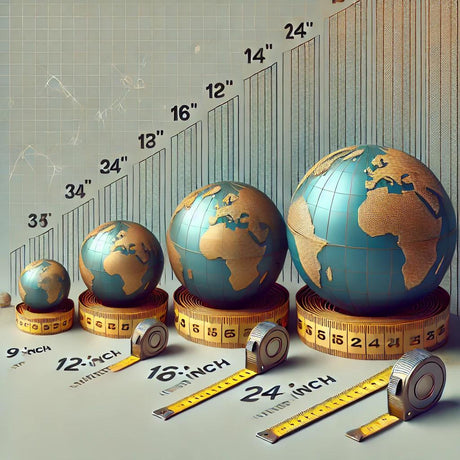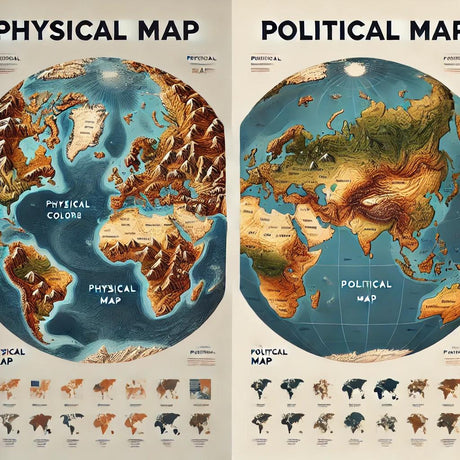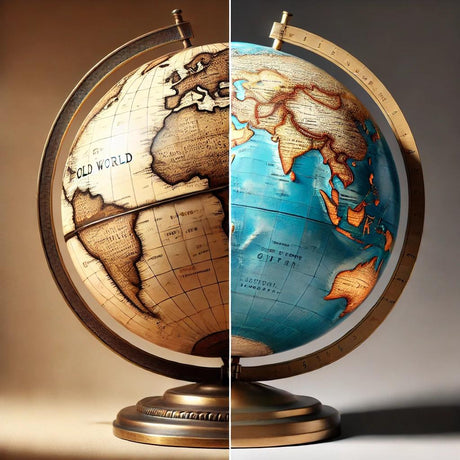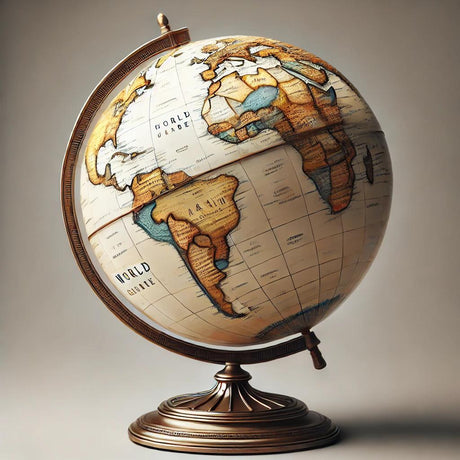
Los globos terráqueos han sido valorados desde hace mucho tiempo por su valor educativo, no solo en geografía sino también en el estudio de la historia. Al proporcionar una representación tridimensional de la Tierra, los globos terráqueos ayudan a los estudiantes a visualizar y comprender los acontecimientos históricos, las civilizaciones antiguas y el contexto geográfico de diferentes épocas. A continuación, se muestra cómo los globos terráqueos pueden mejorar el estudio de la historia.
Visualizando eventos históricos
Uno de los principales beneficios de utilizar un globo terráqueo en la enseñanza de la historia es la posibilidad de ver el contexto geográfico de los acontecimientos históricos. A diferencia de los mapas planos , los globos terráqueos proporcionan una representación más precisa de la Tierra, lo que permite a los estudiantes comprender mejor las relaciones espaciales y las distancias entre las diferentes regiones. Esto ayuda a comprender el movimiento de los ejércitos, las rutas comerciales y los viajes de exploración.
Comprender las civilizaciones antiguas
Los globos terráqueos son excelentes herramientas para estudiar las civilizaciones antiguas y sus entornos geográficos. Al examinar un globo terráqueo, los estudiantes pueden localizar las regiones donde prosperaron las civilizaciones antiguas, como Mesopotamia, el valle del Indo y el antiguo Egipto. Esta perspectiva espacial ayuda a los estudiantes a comprender la importancia de las características naturales, como los ríos, las montañas y los desiertos, en el desarrollo de estas civilizaciones.
Mapeo de la exploración histórica
Las exploraciones históricas y la era de los descubrimientos se comprenden mejor con la ayuda de un globo terráqueo. Los estudiantes pueden utilizar globos terráqueos para trazar las rutas de exploradores famosos como Cristóbal Colón, Fernando de Magallanes y Marco Polo. Este enfoque práctico hace que el aprendizaje sobre la exploración sea más atractivo y proporciona una imagen más clara de cómo estos viajes afectaron la historia global.
Contextualizando los límites históricos
A lo largo de los siglos, las fronteras políticas han cambiado drásticamente. Los globos terráqueos pueden ayudar a los estudiantes a visualizar estos cambios al proporcionar un punto de referencia para comprender los mapas históricos y la evolución de las fronteras de los países. Esto es particularmente útil para estudiar el ascenso y la caída de los imperios, el colonialismo y el impacto de las guerras en las fronteras territoriales.
Mejorar la conciencia espacial en la historia
El uso de un globo terráqueo en la enseñanza de la historia mejora la conciencia espacial de los estudiantes, lo cual es crucial para comprender las implicaciones más amplias de los acontecimientos históricos. Ayuda a los estudiantes a desarrollar un mejor sentido de orientación y ubicación, lo que contribuye a la comprensión del comercio global, la migración y los intercambios culturales. Los globos terráqueos también fomentan la curiosidad y la exploración, lo que hace que la historia sea más interactiva e interesante.
Conclusión
Los globos terráqueos son herramientas indispensables para estudiar la historia, ya que ofrecen una visión tridimensional del mundo que mejora la comprensión y la retención de conceptos históricos. Ayudan a los estudiantes a visualizar eventos históricos, civilizaciones antiguas, rutas de exploración y fronteras políticas, lo que proporciona una forma práctica de aprender sobre el pasado. Incorporar globos terráqueos a la enseñanza de la historia puede hacer que el aprendizaje sea más eficaz y agradable.
Para obtener más información sobre globos terráqueos de alta calidad que se pueden utilizar con fines educativos, visita Ultimate Globes .




